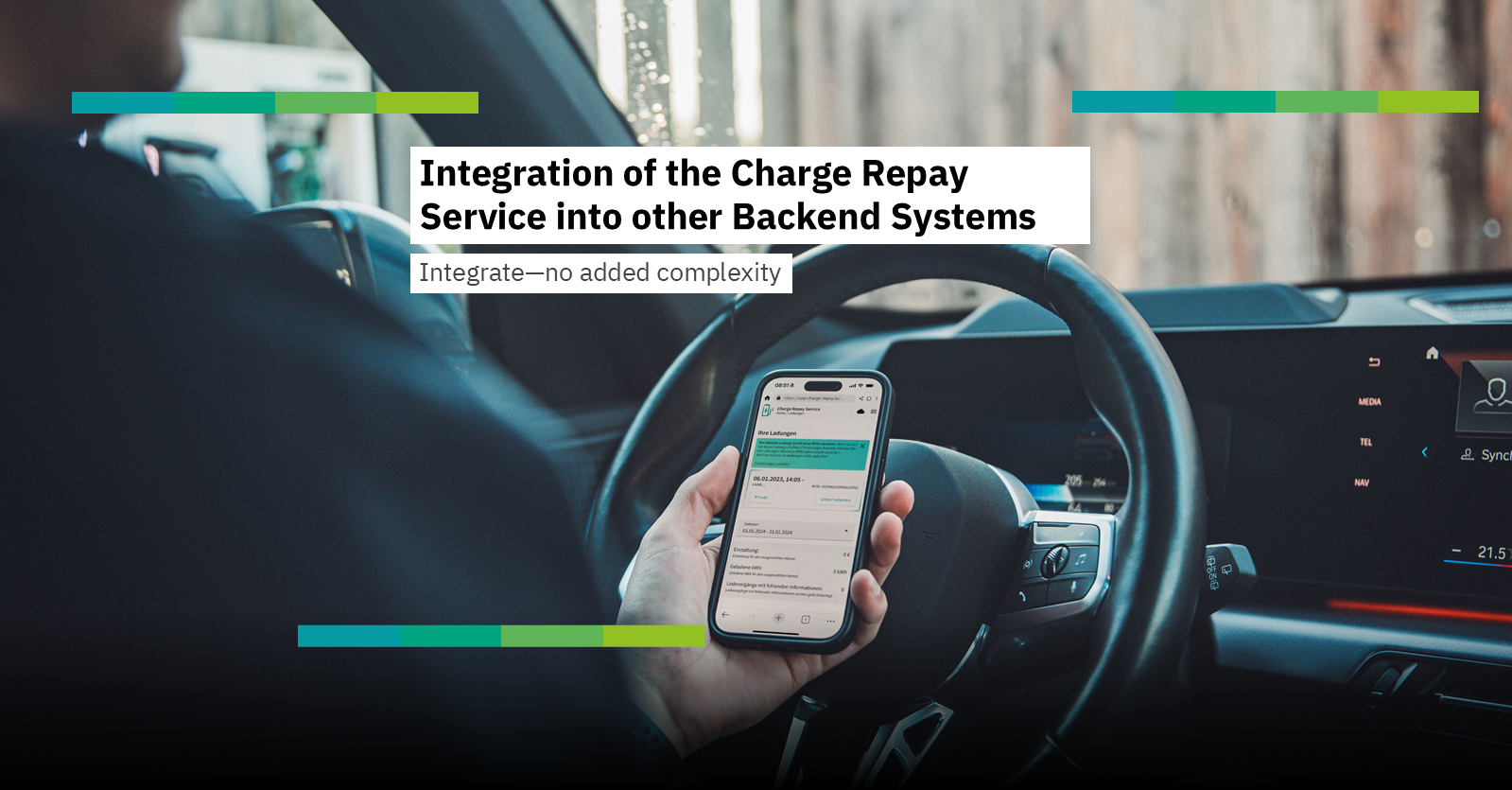Integrating the Charge Repay Service into existing backend systems is a frequently asked question, especially from customers who already use multiple providers in their fleet management. There is often concern that adding another service provider will only make the system more complex and chaotic. In this blog post, we would like to explain the options available to you.
Common Issue: Too Many Service Providers
Many of our prospects already work with providers for various fleet management services and are skeptical about integrating yet another one. We often hear statements like: “We already have providers for this and that—we don’t want to add another.” These concerns are understandable, as too many service providers can unnecessarily complicate the system and make administration more difficult.
Especially in the area of e-mobility, customers often resort to an underdeveloped home charging solution simply because their public charging card provider offers it—even though it’s not their core focus.
The Solution: Integration into Existing Backend Systems
The Charge Repay Service offers elegant solutions: we can integrate seamlessly into existing backend systems and also offer manual exports. This reduces the need to set up entirely new systems and allows customers to continue using their established infrastructure.
Challenges That May Arise
A key requirement for successful integration is the compatibility of your existing systems and the availability of appropriate interfaces—unless you prefer manual data handling. It is also essential that your current service providers are willing to integrate Charge Repay Service data into their systems.

Two Integration Options
There are two ways to integrate the Charge Repay Service into other systems:
Option 1: Manual Exports
In this method, “ready-made” exports are generated from the Charge Repay Service and manually imported into the existing backend system. These exports can be provided in PDF or CSV format. This approach is especially useful for companies seeking a simple and quick way to integrate data without requiring a direct system connection.
Option 2: Direct Integration
The second option is to directly connect the Charge Repay Service to the existing backend system. In this case, individual charging sessions are transmitted via OCPP (Open Charge Point Protocol). This method offers the advantage of real-time data integration with no manual steps required. Additionally, OCPP is a standardized protocol, so only interfaces that already exist are needed or used. Direct integration is particularly suitable for companies that prefer seamless and automated workflows. However, it is important that the backend provider cooperates with the Charge Repay Service to ensure smooth integration.
Lower Complexity Despite Additional Data
Integrating the Charge Repay Service into existing backend systems does not increase complexity. On the contrary, the existing system is simply enriched with additional data without altering its core structure. This enables efficient management of charging processes and better visibility across the entire fleet.
Another advantage is that all other services—such as driver onboarding and hardware installation—remain unaffected. These processes continue to function smoothly and are not disrupted by the integration.
Conclusion
Integrating the Charge Repay Service into other backend systems offers a flexible and efficient solution for companies already working with multiple fleet management providers. With two integration options—manual exports or direct connection—the Charge Repay Service can be embedded into existing systems without increasing complexity.
This integration provides a straightforward way to optimize charging management and make fleet operations more efficient. We look forward to supporting you with implementation and are always available to answer your questions.




